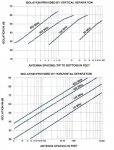Hi Guys,
I need your technical answers about the below points, thanks.
I need your technical answers about the below points, thanks.
- If we have a separate antenna for Rx and Tx at your site, which one should be installed higher on the mast in a typical scenario? Why?
- Does 100W repeater/BS give more coverage compared to 50W repeater/BS? Please describe why?
- If the customer is going to install a site in the center of the targeted coverage area, which antenna you recommend them to use, Omni-Directional or Directional? What if the site is going to be in a corner of the targeted area?
- Does changing the antenna of portable radios with a higher gain antenna, affect the coverage of Downlink/Talk-Out? What about Uplink/Talk-In? Please describe the reason for your answer.


